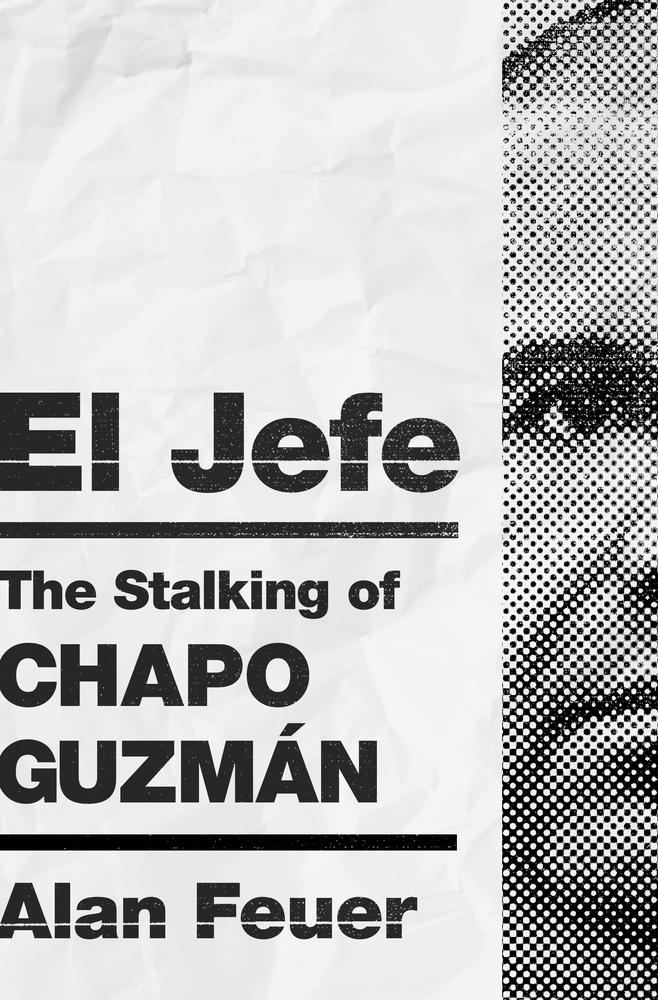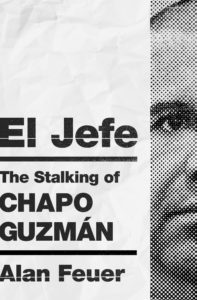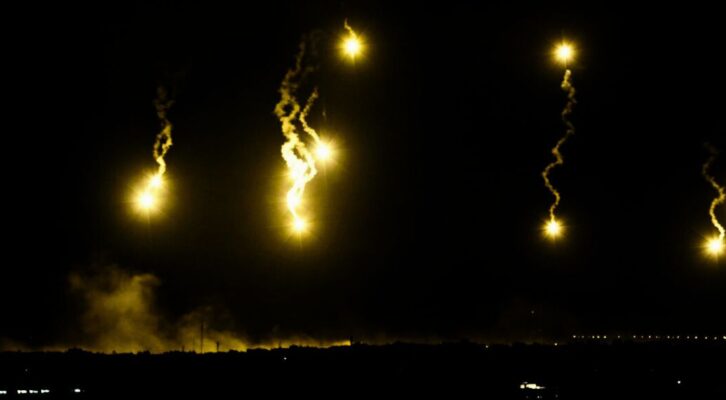Shackled at the wrists and sandwiched between three Marines in ski masks, the world’s most wanted man was on the move. Within hours of his arrest, Guzmán was placed on a military Learjet and flown to Mexico City. There he was presented at a perp walk for reporters in a pair of handcuffs and a crisp white dress shirt. It was not much after noon on a Saturday in February, but seizing on the weekend news, the global media was already in a frenzy. The Associated Press, having gotten the initial tip, was first in reporting that the “legendary outlaw” was in custody, noting that his “larger-than-life persona” and his place in “Mexican folklore” had been unable to assist him this time. To the Telegraph, Guzmán was a “mythical figure”; to El País, he was “the most important narco that has ever been.” The New York Times paid homage, somewhat staidly, to the drug lord’s “legend” and the “mystery of his whereabouts.” It also obtained a quote from a source on the ground who shared his opinions on Guzmán’s ambiguous ontology. “He was somebody who existed,” this philosophical man-on-the-street explained, “and didn’t exist.”
In the welter of words and images that day, it wasn’t the worst description. His own kind of centaur—half man, half make-believe—the kingpin had always occupied the hazy space that sat between reality and fairy tale. It was often impossible with Chapo Guzmán to know where the folklore ended and the facts began. The anecdotes about his life and crimes had been passed from hand to hand so often they had finally acquired the edgeless quality of fables. Was it really true, as the newspapers said, that during his early days in the mountains he would come down out of hiding for lavish meals in Culiacán and have his men collect the cell phones of all the other diners in the restaurant? And what about the story he told to Javier Rey about the time that soldiers took him into custody in Nayarit and flew him upside down, hanging him by his ankles, from a helicopter?
This sort of narrative broad-mindedness was familiar to many in Mexico and was especially well known in Sinaloa, riven as it was by a tradition of inequality and the sort of social hardships that inspire magical thinking. The particularities of history had prepared the state for Guzmán’s outsize legend. For more than a hundred years, Sinaloa had been ruled by a caste of powerful caciques, local strongmen who nominally ran the region for the federal authorities, but were in practice more like feudal lords, accountable to little beyond their own ambitions and avarice. As the state industrialized in the middle nineteenth century, their plunders of the poor triggered the emergence of a class of outlaws who often conflated profitable brigandage with political rebellion. Much like Robin Hood had skirmished with and stolen from the landed gentry of Nottinghamshire, men like Heraclio Bernal (1855–1888) and Felipe Bachomo (1883–1916) robbed and revolted against the nobles of Sinaloa. Over time, these real-life radical bandits coalesced in the state’s imagination into the single mythic figure of Jesus Malverde, the so-called narco-saint.
in Sinaloa, where it has been handed down from fathers to sons since the moment of its creation. Born in 1870, Malverde was said to have been raised in the region when it was under the thumb of Governor Francisco Cañedo, who carried out a repressive policy of economic expansion for the ruthless dictator Porfirio Díaz. Malverde’s parents were apparently so penniless they starved to death, leaving him to fend for himself in a job on the Mexican railroads where he was exploited by a string of brutal bosses. Looking for a better life, and perhaps vengeance, he moved to the mountains with a band of hardy men who joined him in his quest to rob from the rich and give to the poor. But Cañedo put a bounty on his head, and one of Malverde’s men eventually betrayed him. After his capture, in 1909, Malverde was put to death, either shot by a firing squad or hanged by the police.
Eighty years later, when Chapo Guzmán started his career, generations of narco-traffickers had already co-opted Malverde’s saga to justify their own business model of stealing, as they saw it, from the drug-addled gringos in the north and repatriating the profits back to Mexico. In this retelling of the story, the narcos—like the bandits of old—were heroes: a ragtag bunch of poor kids from the mountains who slipped across the border and returned with treasures for their families. There is some evidence that as Guzmán’s fortunes grew, he too shared a portion of his wealth in Sinaloa (he was particularly fond of building churches). But the idea that he, or anyone around him, was engaged in a program of redistributing assets is a fable built upon a fable. Guzmán’s real progenitors were not Malverde or Robin Hood; they were Houdini and the Road Runner.
For more than a decade before his arrest at the Hotel Miramar, Guzmán had been staging public spectacles, enacting evasions and escapes to the glee of many ordinary people who were saddled with a history of abuse and neglect by the authorities. If his magic tricks were not in fact magic, but engineered events, carefully oiled by government graft, it didn’t matter. Or at least it didn’t diminish the schadenfreude-like pleasures of watching him perform his act.
That was what was not getting through in the media frenzy following his capture: the kingpin’s legend wasn’t simply based on his enviable fortune or his startling longevity or his time-proven talent for slipping away; it was based on how all of these qualities conspired together to expose the fecklessness and corruption of the government. Every time that Guzmán managed to be there one minute, gone the next, it reinforced a preexisting belief that Mexico’s rulers were the fools that everyone assumed them to be. Every dollar that Guzmán spent on bribing the authorities had a double purchasing power: it served not only to protect him and his interests, but to prove—as if more proof were needed—that the guardians of the country’s body politic were unworthy of its trust. “Today I believe more in El Chapo Guzmán than I do in the governments that hide truths from me,” Kate del Castillo had tweeted two years earlier. After the events in Mazatlán, a perceptive professor said something similar to a Mexican reporter: “With the state of things in Mexico, the situation is truly interesting. . . . The idols, the heroes, who should be official figures of moral integrity, decency and honor, don’t exist.”
That Guzmán had been arrested, despite this lack of official integrity, in no way contradicted the idea that on the whole the Mexican authorities were compromised. Nor did it contradict the idea that the American authorities who had helped in his arrest were hindered by their own moral failing—namely, a recurrent inability to get along with one another. The capture operation that began near Pichiguila, moved through Culiacán and ended on the Avenue del Mar was dis- tinguished by its technical expertise and its sheer dogged persistence. But it was also blessed by no small amount of happy accident. With Guzmán, it had always been like that. “We understood pretty quickly that there was only one way to get him,” said Thomas Shakeshaft, a Chicago prosecutor who pursued the kingpin for a decade. “It wasn’t enough to just be good. You had to be a little lucky too.”
And yet, for some suspicious souls, even hard work leavened by a bit of luck was not enough to account for the success of getting Guzmán off the streets. There had to be something else at play, and in the dark world of the drug war that usually meant a conspiracy. Even as Guzmán was sent to prison, the Mexican media was full of knowing whispers. The kingpin, it was said, had overplayed his hand and had finally lost the trust of his government protectors. Unless, of course, his partner, Mayo Zambada, tired of the heat that he had long brought down on the cartel, had decided to turn him in.
There is no shortage of conspiracy theories concerning Chapo Guzmán. Discussing the kingpin in an academic treatise on Mexican cartels, the sociologist Jim Creechan correctly notes that it was he—and not the equally guilty Mayo—who first became the face of the international drug trade. (Creechan’s work comes from a draft chapter on Guzmán in a book currently titled “Cartels and Drug Violence.”) To Creechan, Guzmán’s prominence, reaching back to the early 1990s, presents a paradox—“the paradox of visibility”—because prominence runs counter to the normal way of mafia bosses, who tend to operate in quiet anonymity. This “narco-stardom,” as Creechan calls it, suggests that Guzmán was actually much less powerful than Mayo, and that he may indeed have been elevated to his celebrated status in order to distract the world from the crimes of other colleagues.
Creechan’s argument—and he is not alone in making it—goes like this: In 1993, after the assassination of Cardinal Ocampo, Mexico’s then president, Carlos Salinas de Gortari, found himself in an untenable position. Salinas, on the one hand, needed for political reasons to get tough on organized crime and assuage the public outrage that the cardinal’s killing had occasioned. On the other hand, Salinas could not be too hard on the traffickers, given the central role they played in his economy and, worse, the information that they had on his own administration’s involvement in the drug trade.
Caught between this rock and a hard place, Salinas supposedly opted for a third way: diverting the attention of his country onto a chivo expiatorio, or scapegoat. “El Chapo Guzmán became the sacrificial lamb,” Creechan writes. “The government . . . moved to muster evidence that the Chapo Guzmán narrative represented the most credible explanation of the murder, and simultaneously and improbably, initiated a plan to persuade the world that this insignificant and uneducated man from Mexico’s western Sierra Madre was the most important boss of Mexico’s most important drug cartel.” Following this “ritual elevation,” everyone apparently went home happy. Salinas, appearing to do something by jailing Guzmán for Ocampo’s death, reduced the pressure on his government to do too much. Guzmán’s rivals in the drug trade—among them Mayo Zambada and the Tijuana drug cartel, which had actually killed the cardinal—were spared the pains of a crackdown. Even Guzmán seems to have gotten something in the bargain: “a payout or trade-off from other cartel leaders” for gradually agreeing to accept the blame.
As seductive as all of this may be, it suggests the lengths to which otherwise reasonable people will go in trying to explain the allure of Chapo Guzmán. A cottage industry has in fact sprung up with the sole goal of accounting for his myth. What often ends up happening is that one myth is substituted for another. If it seems unlikely that an insignificant, uneducated peasant from the western Sierras could rise to become the maximum boss of the Mexican drug trade, then surely the president of Mexico put him in the post; or his cunning partner maneuvered him into taking it; or Central Intelligence, fearing what he might reveal about its own operations in the country, secretly helped him out along the way.
Though perhaps less satisfying as an answer, it could simply be that Guzmán’s myth arose from the way in which his natural talents—for corruption and escape—played in front of a specific local audience, one that thrilled to see the government embarrassed. It is certainly the case that Guzmán was tenacious—and a little lucky—just like the law enforcement officers who tracked him down and captured him. The kingpin was, by all accounts, obsessed with his profession, a workaholic who never shut up about the office. “Chapo always talks about the drug business wherever he is,” one of his first employees, Miguel Angel Martínez, once said. “With whatever people he’s with, he’s talking about drugs.”
Guzmán also started his career at an auspicious moment: in the early eighties just as demand for cocaine was reaching its peak in the United States. At the end of the decade, he was further helped when, under pressure from American officials, the Mexican authorities arrested his mentor, Miguel Félix Gallardo, dismantling the old regime and creating space for fresh blood from below. As Guzmán found his place in the power structure after Félix Gallardo was imprisoned, NAFTA came along, deregulating the border and ravaging local agriculture. The sudden spike in international trade made it infinitely easier to ship drugs north, hidden in the endless streams of cargo trucks; it also persuaded many farmers to switch to illicit crops or to leave their land for crowded urban slums. There, devoid of options, some began to work for the cartels.
Driven by ambition in a booming market filled with opportunity, inventory and labor, it may not have taken a complicated conspiracy to have launched Guzmán into celebrity—especially when he himself relished being celebrated.
Just before the Marines swooped down on him in Mazatlán, he had put the finishing touches on the El Padrino movie project. Working with his assistant, Andrea Velez, he had lovingly assembled an eighteen-page promotional package for the film, complete with a biography section (“Who is Joaquín Guzmán Loera?”) and a scene-by-scene synopsis of its episodes. The Mexican actor Gael García Bernal had been tentatively cast as the young Chapo Guzmán, with John Leguizamo slotted for the supporting role of Pablo Escobar. The “paradox of visibility” was paradoxical only in the sense that Guzmán never wanted to be invisible; he wanted to be seen.
*






















